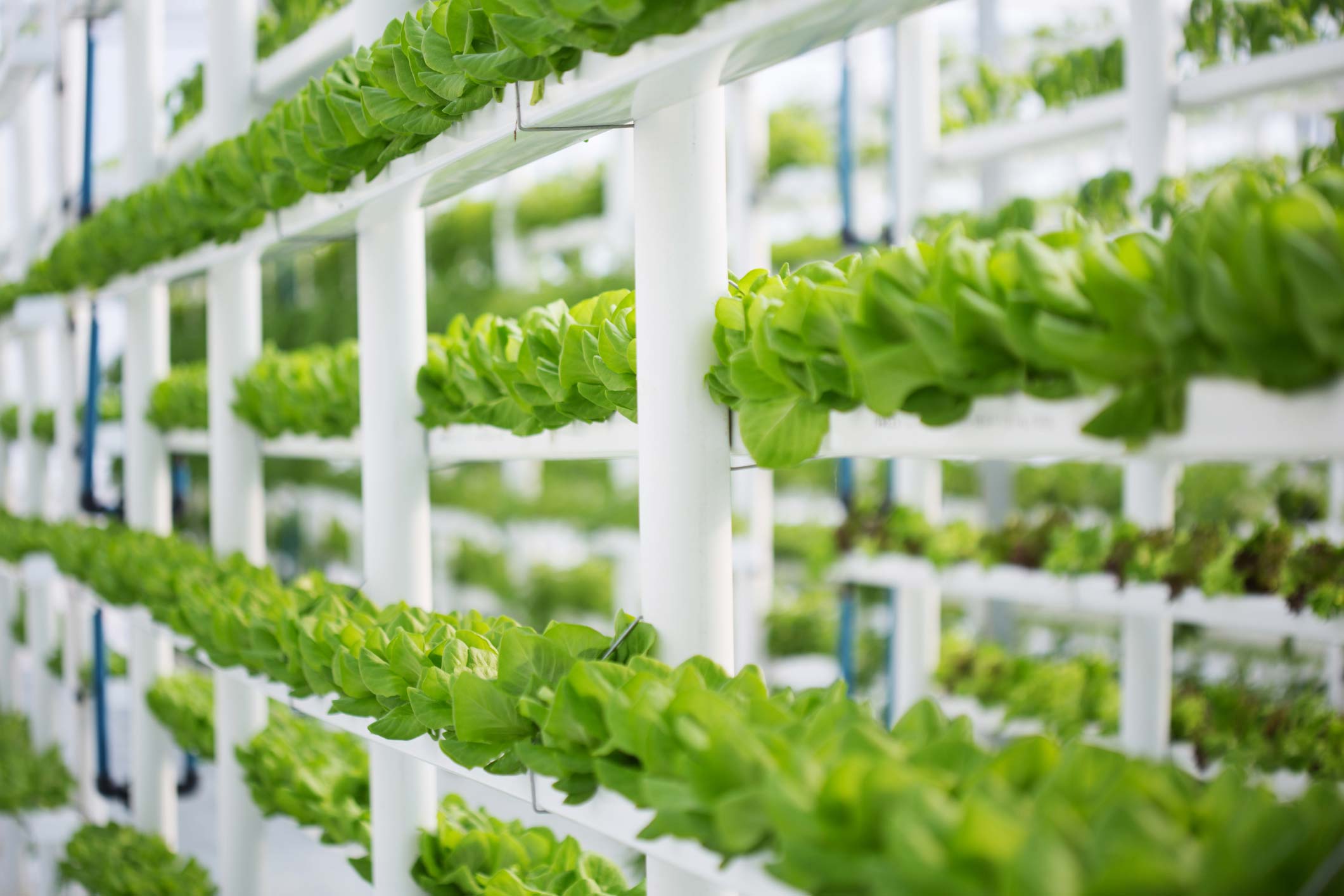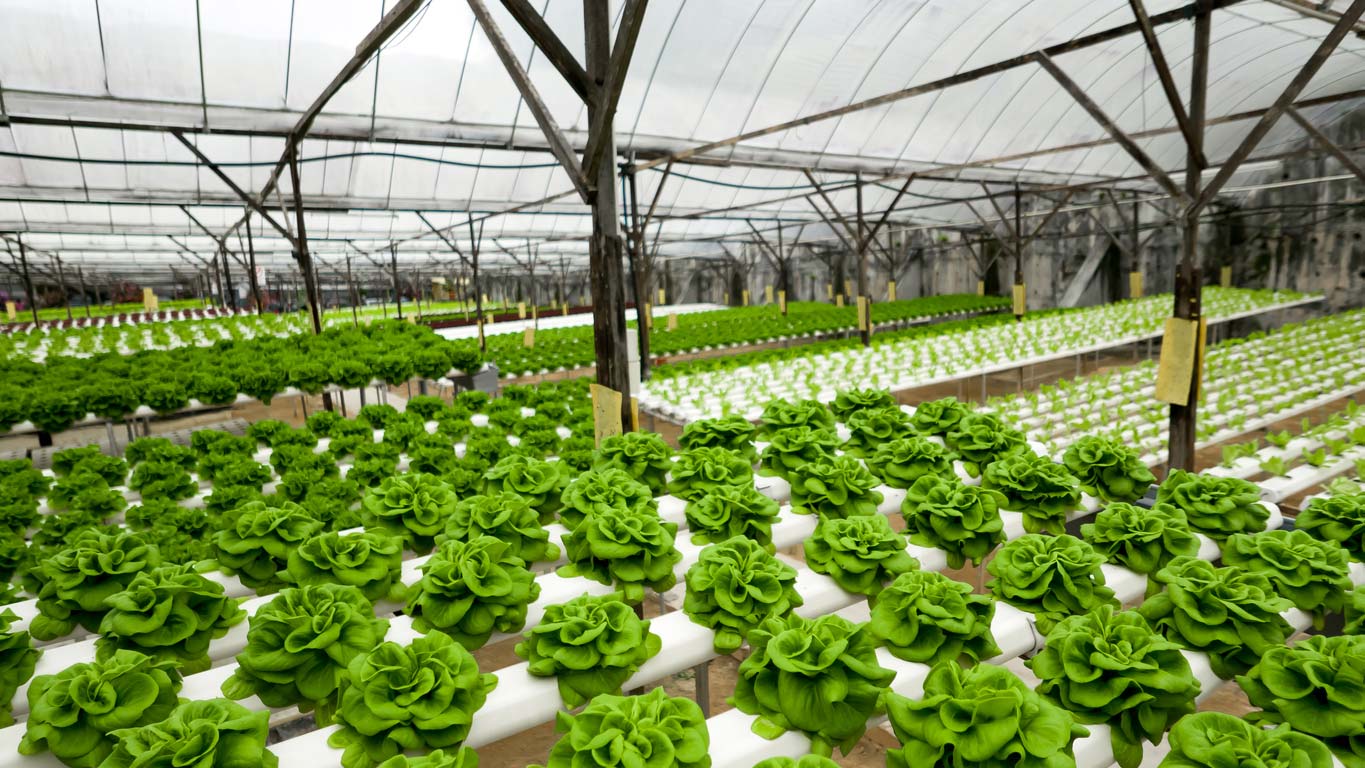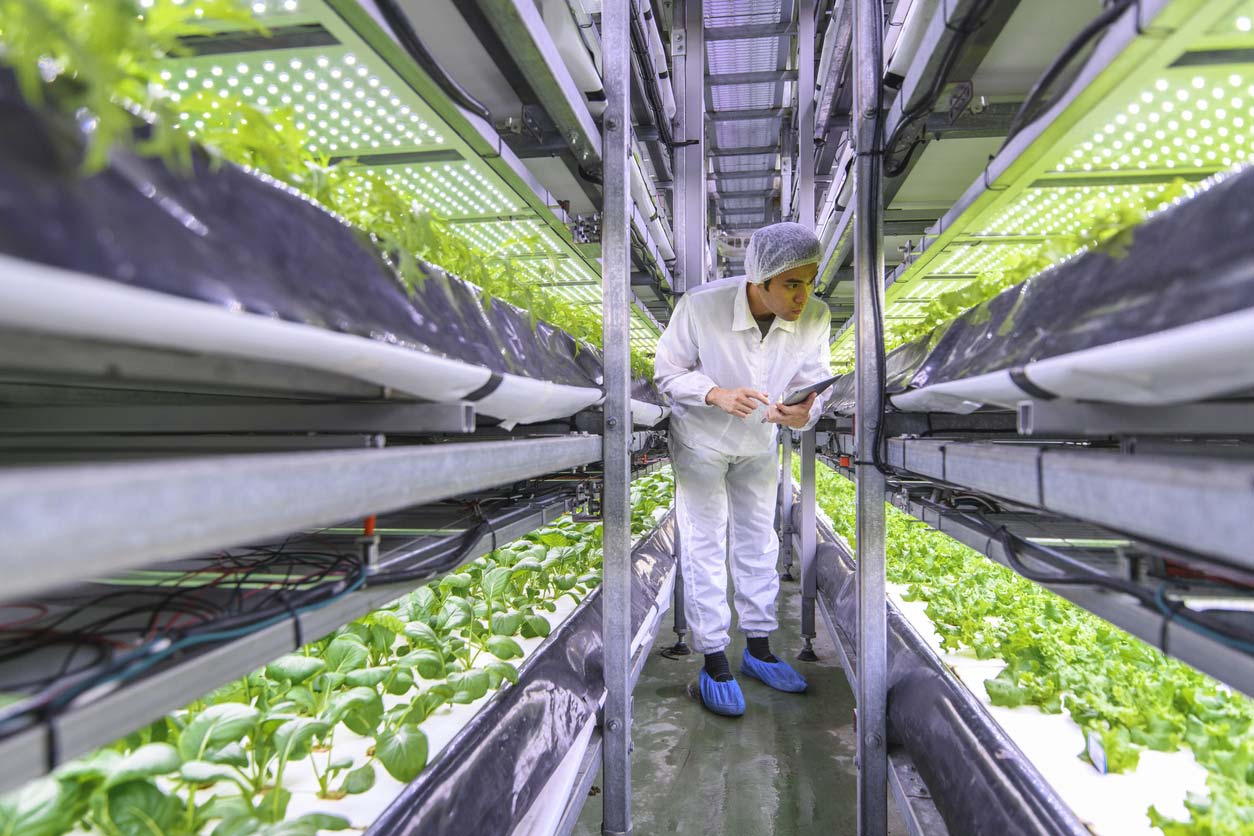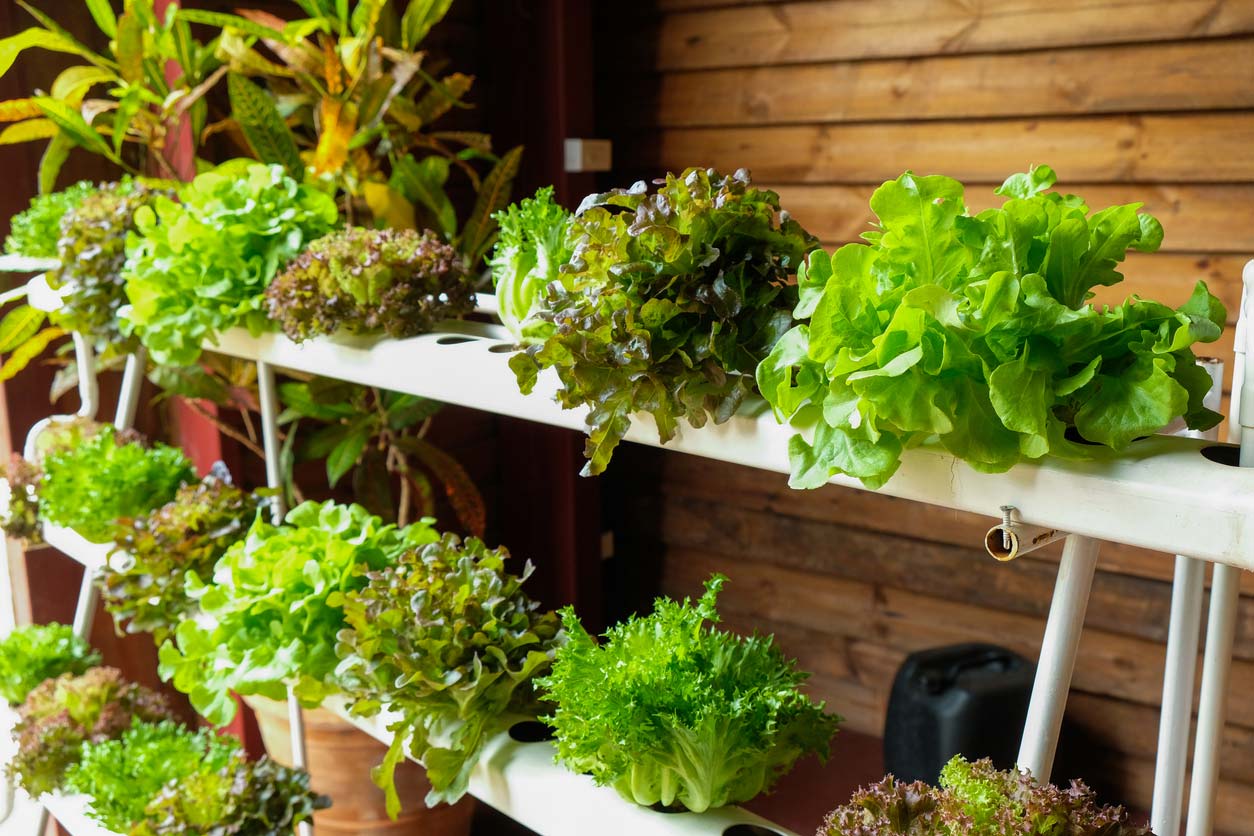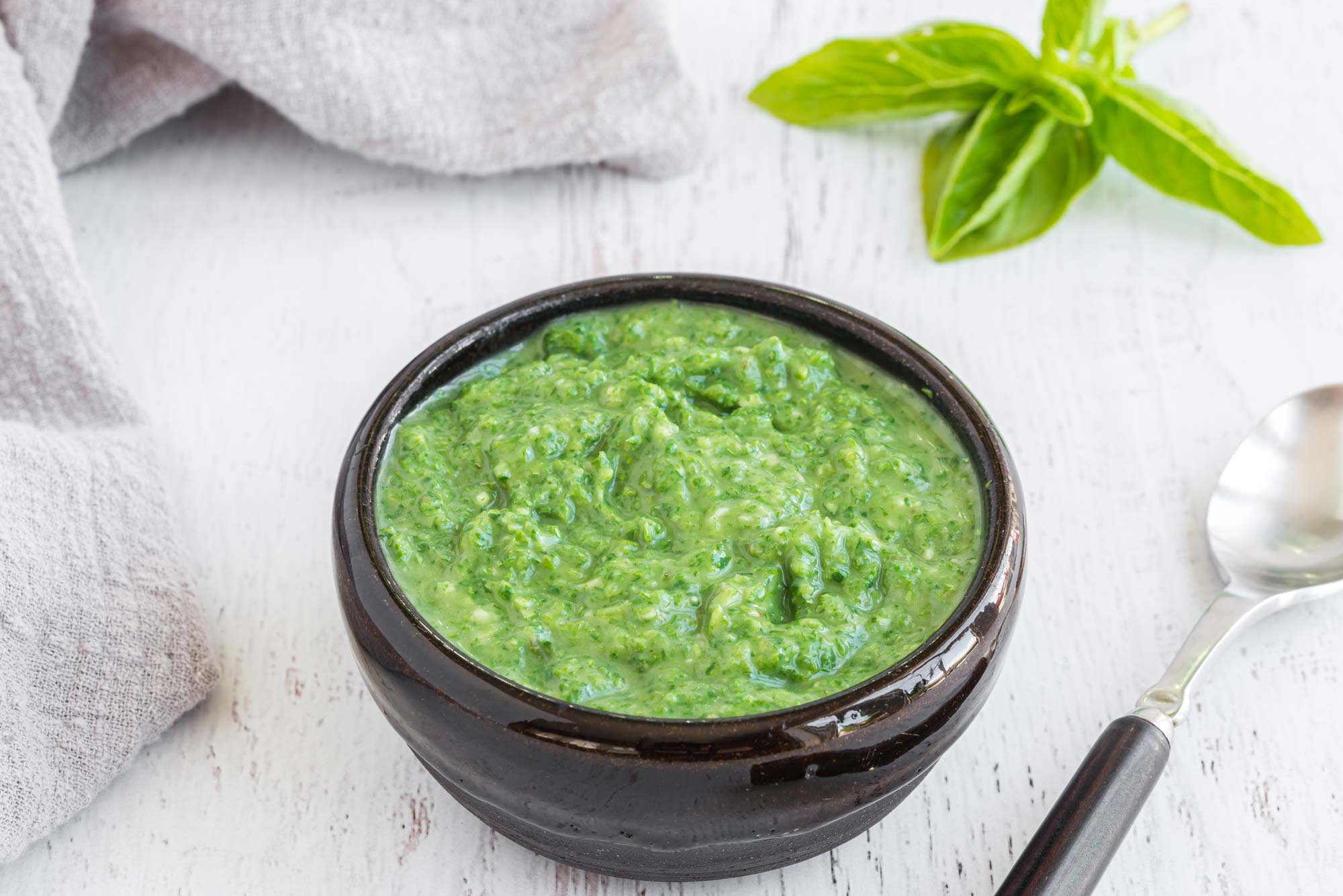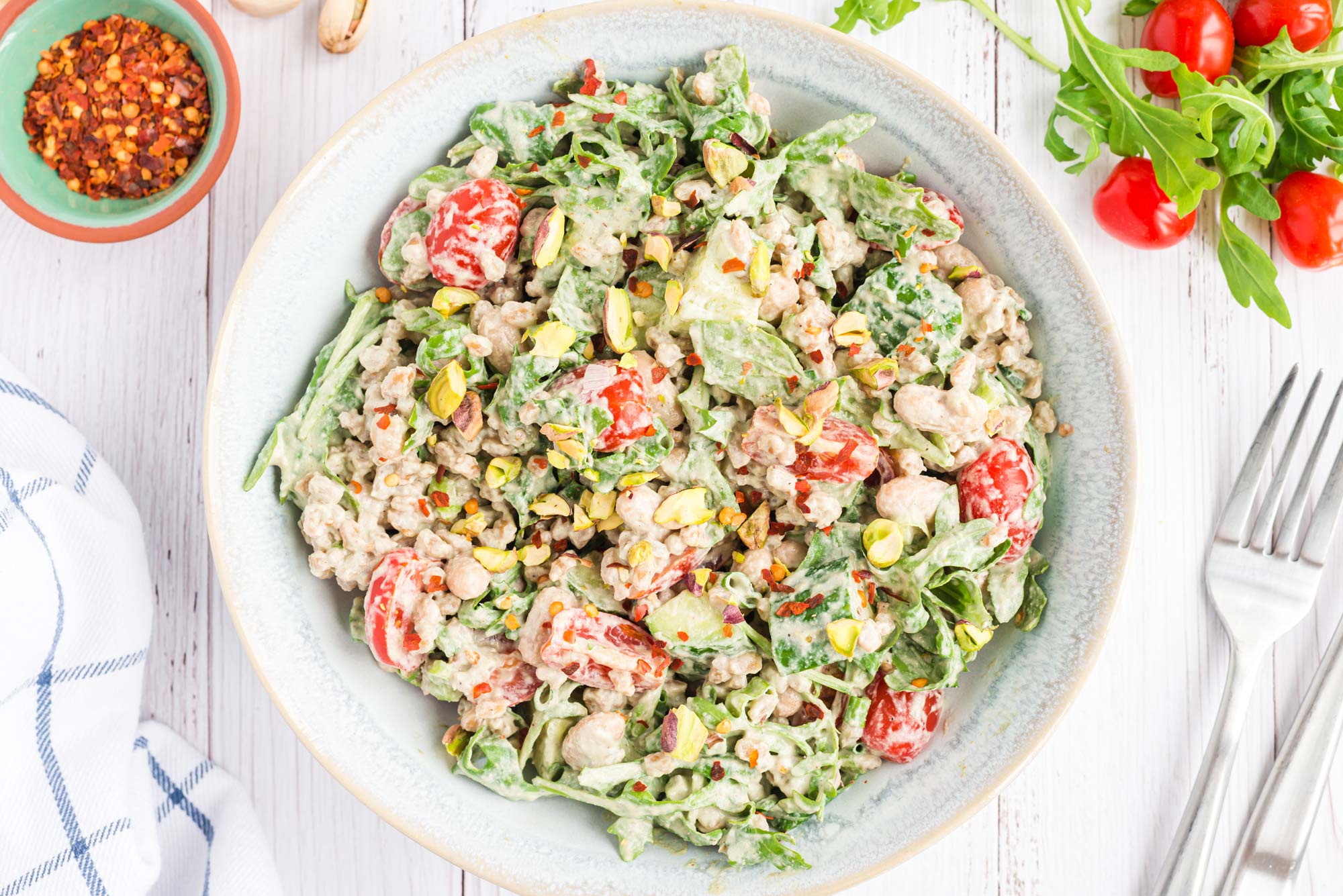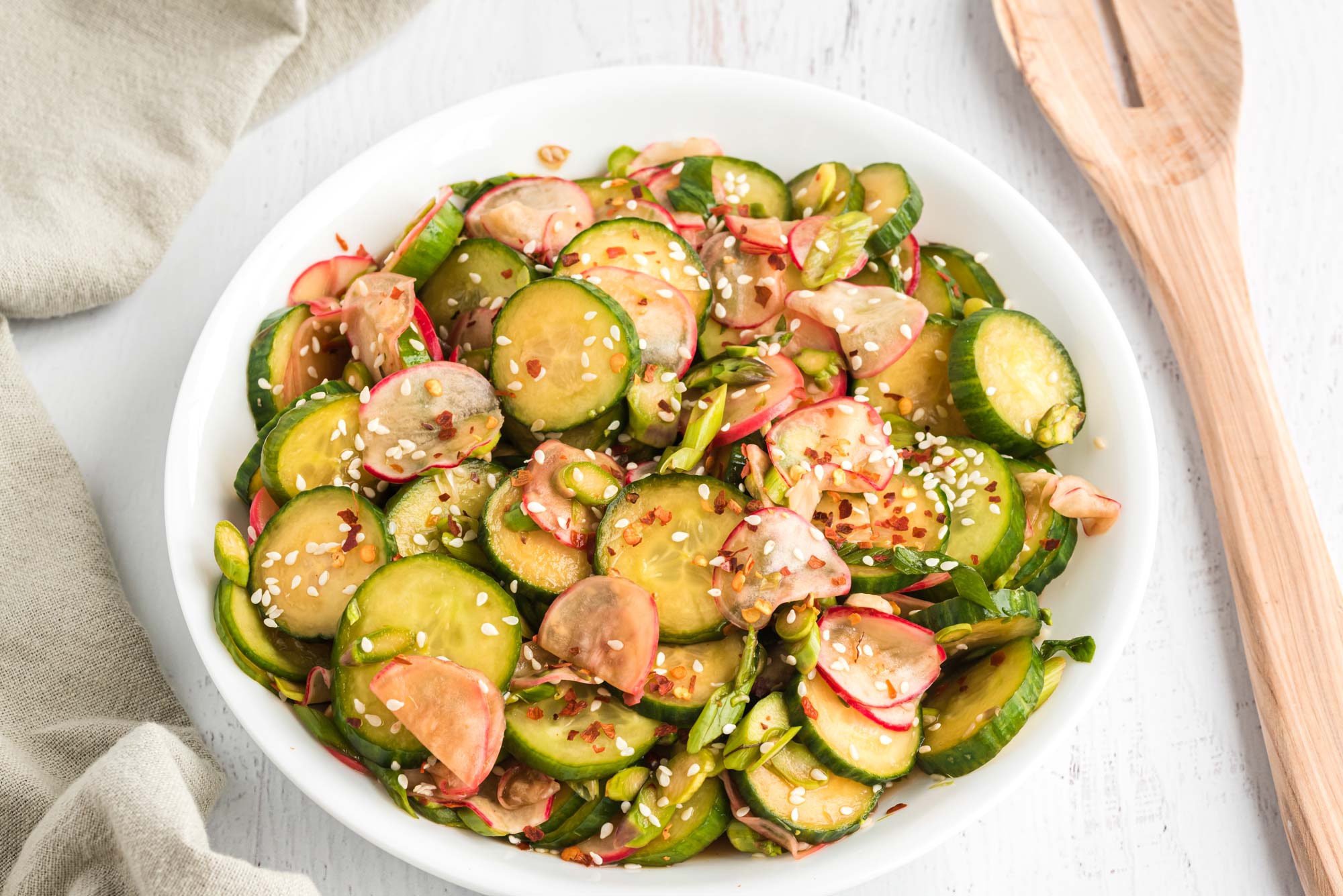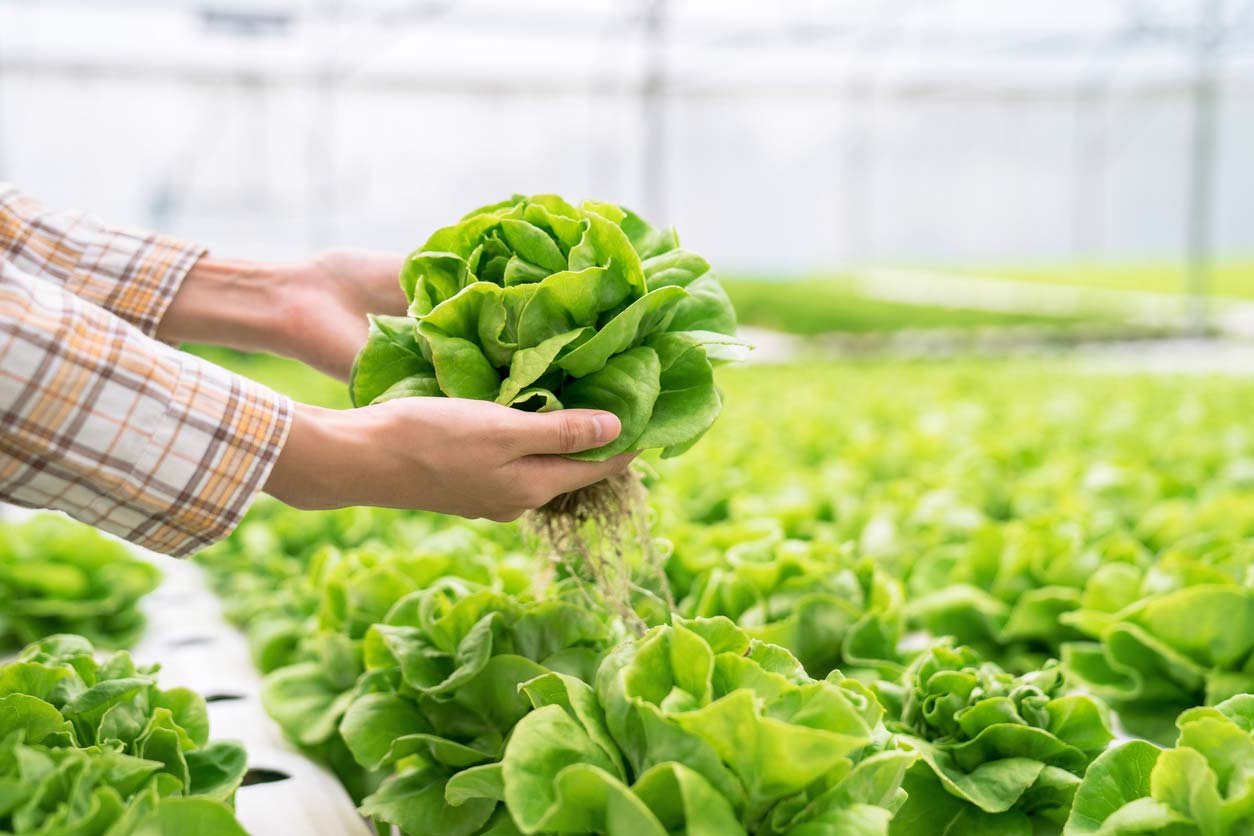Editor’s Note: For a quick summary of the main points in this article, jump to the TL;DR (Too Long; Didn’t Read).
Modern industrialized agriculture produces a lot of food, but it’s also destroying the planet. With its over-reliance on pesticides and other agrochemicals, mechanization, and mono-cropping, it’s depleting our topsoil and aquifers, polluting our water and air, and destabilizing our climate. And climate change could make it harder to grow food in the years ahead, with droughts, floods, and extreme weather threatening food security for billions of people around the globe. So are there options emerging that address these downsides and might set up our food system for a more sustainable future?
Yes, there are.
Proponents of regenerative agriculture, permaculture, and other emerging sustainable food production methods point out that we can sequester carbon in the soil, create more nutrient-dense food, reduce or eliminate reliance on agrochemicals, and create more nutrient-dense, resilient, and sustainable food systems. These and other low-tech solutions work with the laws of nature and seek to enhance rather than exploit natural living systems.
But what about hydroponics? At first glance, it sounds anything but natural. But does it work? And could it be part of the solution?
What Is Hydroponics?
Hydroponics is a type of agriculture or gardening method that doesn’t use soil. The term comes from the Greek words “hudor” for water and “ponos” for work, so in translation, it essentially means “water-working.”
If there’s no soil, you may be wondering, then what do the plants grow in? While we’re still just scratching the surface in our quest to understand how complex our soil microbiome is, it’s now widely believed that there are just 16 nutrients that plants require in order to grow. Three of them — carbon, hydrogen, and oxygen — are accessible through air and water exchange. The rest, along with growth hormones designed to mimic traditional soil-based systems, can be dissolved in water that circulates around the plant’s roots. Hydroponics seek to use science and engineering to efficiently mimic the vital elements of a plant’s natural environment, delivering precise quantities of nutrients at precise times.
While modern agriculture is only recently utilizing hydroponics on a large scale, growing plants without soil isn’t actually a new concept. The sometimes disputed Hanging Gardens of Babylon were considered one of the seven wonders of the world and may have been one of the earliest examples of hydroponics. Egyptian hieroglyphics also indicate that water gardening was used as ancient civilizations developed along the Nile River. And the Aztecs employed hydroponics in their floating gardens in Mexico, planting crops on rafts floating on the surface of Lake Tenochtitlan. Farmers trained the roots to trail beneath the raft, accessing lake nutrients that would otherwise be inaccessible.
Sprouting seeds and eating the sprouts, which people have been doing for thousands of years, is also technically a form of hydroponic agriculture. If you enjoy broccoli or mung bean sprouts (or alfalfa, sunflower, or any other sprouts), you’re a hydroponicist! And I just made up a word!
Modern Hydroponics
William F. Gericke, a biologist at Berkeley, brought hydroponics into mainstream consciousness in the 1930s. He first made waves with a 1929 paper titled “Aquiculture—A Means of Crop Production” that was published in the American Journal of Botany. His claim — that farmers and gardeners could grow plants in water, without soil — inspired derision and disbelief from scientists and growers alike. He might as well have insisted that humans didn’t need to breathe air.
But Gericke didn’t back down. Instead, he did what any self-respecting scientist would attempt to do — he proved it. In 1936, Gericke showed off tomato plants grown without the benefit of soil that were up to 25 feet tall and yielded up to 17 pounds of fruit per plant. He was able to harvest nearly one ton of tomatoes in just 10 square feet, which makes me hope that he had lots of neighbors who enjoyed spaghetti. With that astounding demonstration, and its publication in the prestigious journal Nature in 1938, hydroponics captured the imagination of farmers and scientists who saw this technology as a chance to revolutionize farming and feed the world more fully and efficiently.
Modern hydroponics — highly precise, data-driven, automated, and scalable to dimensions unimaginable by Gericke (though not, perhaps, to the Aztec farmers who cultivated crops on top of a 2,100 square mile lake) — benefited from advances in chemistry, data science, and computing. Today, according to estimates from the Associated Press, food produced using hydroponic technology is worth $32 billion in sales — and is increasing quickly.
Benefits of Hydroponics
Like it or not, hydroponics is likely to continue expanding and evolving as time goes on. And in parts of the world that are being devastated by drought and topsoil erosion, it presents some appealing advantages.
High Yield
Hydroponics offers a higher yield of calories per growing area. This is one of the reasons the UN’s Food and Agriculture Organization (FAO) is helping to implement the use of hydroponic farming in areas of food shortages to help produce more crops and feed more people. Plus, plants grown hydroponically can grow at least 20% faster than their soil-bound counterparts.
Control
Unlike growing in soil, where there are so many different influences (pH, light, air temperature, microorganisms, tilth, and so on), hydroponic growing can be almost completely controlled. This is because it effectively removes the plant from a natural environment and instead creates what is, at least in theory, an optimized ‘ecosystem’ designed to grow in the absence of soil. The plants are fed a nutrient solution that can come in many forms, but usually, it’s water with a mix of fertilizers and minerals or trace elements that plants require for food.
Less Water
At a large scale, hydroponics consumes less water — up to 90% less than traditional field crop watering methods — because most hydroponics use recirculation techniques to minimize waste. In conventional farming, water is lost due to evaporation, inefficient irrigation, and soil erosion among many other factors. Because hydroponics is removed from the natural water cycle, it can cut down on losses in these areas.
Regional Diversity
Hydroponics allows farmers to grow food pretty much anywhere. For instance, hydroponic systems can be set up in homes, greenhouses, or any indoor space. Even desert climates, like in Egypt and the Middle East, can support hydroponic agriculture at a scale capable of addressing local food needs. Scientists are even attempting to utilize the technology on the International Space Station — in a facility called “Veggie” — to grow food for astronauts so that they can stay in space for longer missions. In fact, after a lot of testing, astronauts were able to eat space-grown leafy greens in 2015.
Continuous Production
Hydroponic technology offers continuous production as well. Unlike conventional agriculture which primarily utilizes large outdoor crop fields, hydroponics growers don’t have to worry about the changing seasons. Crops can be grown and harvested year-round, increasing supply and reducing the need for preserving food.
Fewer Toxins
While conventional agriculture relies heavily on chemical herbicides and pesticides, hydroponic systems do not require much if any of these toxic applications. Because there’s literally no soil for pathogens to live in, few pests or diseases can survive in a properly-maintained hydroponic setup. And although chemicals are sometimes still a part of hydroponic growing, most at-home systems can remain free of pesticides and other harmful agrochemicals.
Downsides of Hydroponics
Along with those considerable benefits, hydroponic agriculture comes with some challenges and problems, too.
Environmental Impact
Hydroponic growing can save water, but it can also require significant infrastructure since it’s typically done in an indoor setting. And the vast amount of tubing, as well as containers for the growth media, typically require large amounts of plastic. Over time there may be less resource-intensive methods developed, but for now, this is a big drawback. And some hydroponic systems depend on grow lights that use significantly more energy than outdoor soil-based agriculture. Some also use chemical fertilizers that are non-renewable, too. And while hydroponics can save a lot of water when implemented on a large scale with recirculation techniques, smaller-scale home gardeners may not experience these water savings.
In addition, hydroponics represents something of a missed opportunity to practice one of the most hopeful opportunities that holistic regenerative agriculture offers, which is to sequester carbon and replenish soil.
System Vulnerability
Hydroponic systems can get highly sophisticated. And if one of the pieces — like a pump, string, or timer — should fail or be installed incorrectly, the entire crop yield is at risk. Like all scalable systems, hydroponics can sacrifice resiliency for efficiency.
Economic Control
Large-scale hydroponic farms require a significant infrastructural investment that comes with a hefty price tag that can run into millions. This can make it harder to access unless growers have deep pockets or are backed by investors. If scaled up, is it possible that it could wind up marginalizing small-scale farmers and putting our agricultural systems more in the hands of large companies and venture capitalists?
Nutrition
The nutritional value of hydroponically grown foods can vary, although vitamin levels tend to be similar whether a vegetable is grown hydroponically or in soil. Overall, hydroponic plants can be just as nutrient-dense as conventionally soil-grown plants. But not all hydroponically grown plants have the same mineral content, which depends mainly on the nutrient solution used. Furthermore, more research needs to be done to fully understand whether or not hydroponic fruits and vegetables can produce the same secondary plant metabolites as conventional produce — which can affect everything from taste to medicinal potency. This lack of research is fueling concern that plants grown in water rather than soil may be missing some unknown plant nutrient. This could lead, over time, to unforeseen micronutrient deficiencies in food grown this way.
Organics, Ethics, and Labeling
You may be wondering, can hydroponically grown foods be certified organic since most don’t use pesticides? This is a controversial topic. Many organic farmers say no. They explain that the centerpiece of organic farming is building healthy soil (which can also be a way of sequestering carbon from the atmosphere).
Jim Cochran, owner of Swanton Berry Farm, one of the oldest certified organic strawberry farms in California, tells us: “While I welcome the work that my friends in the hydroponic industry are doing, hydroponic production does not conform to the soil-building precepts of organic farming. I would be perfectly happy to have my strawberries compete with properly distinguished, hydroponically-grown strawberries, without the latter piggybacking on an organic label that has taken more than 30 years to develop and establish in the minds of consumers. Certifying hydroponically-grown crops as organic devalues that label.”
But the USDA sees it differently and has ruled that hydroponically grown food can be certified organic, so long as it is free from GMOs, chemical pesticides, chemical fertilizers, and sewage sludge. For better or for worse, as of this writing, the USDA has certified at least 41 hydroponic operations as organic.
And while some retailers do label hydroponically grown foods, they aren’t required to do so. Commercially-produced foods that are most likely to be grown hydroponically are leaf lettuce, tomatoes, peppers, cucumbers, strawberries, watercress, celery, and some herbs.
Types of Hydroponic Systems
There are 7 basic types of hydroponic systems. Here’s how each of them works.
1. Wick System
This system, named for its functional resemblance to a candle wick, is the simplest setup. Nutrients are pumped from a water reservoir, via a string, up to the growing medium that holds the plants. This approach is a popular choice for home gardeners who want to give hydroponics a try. But it isn’t great for larger plants because a string isn’t able to provide enough water for them. And an incorrect setup or material use can be fatal to the plants.
2. Deep Water Culture System
Also called the Kratky Method, after its creator, the University of Hawai’i horticulturist B. A. Kratky (who, and I am not making this up, received a degree in “Weed Science” from Purdue University in 1971), this system works by placing plants in pots on top of a floating holder so that the roots are in the growing medium. It recirculates water, reducing waste, and is inexpensive and very low maintenance. However, this method isn’t a good fit for large plants either, or plants that have long growing periods because they have to be lightweight enough to be well supported by the floating raft.
3. Nutrient Film Technique (NFT) System
This system is used in many vertical farms, which are essentially plant skyscrapers. Some can house thousands of square feet of hydroponic growing systems. NFT is also the most common type to use in home, lab, and commercial settings. It works by allowing a continuous nutrient flow to the plant and back to the reservoir using a slightly downward-facing tube. This design has two advantages: it doesn’t require a timer because the pump runs 24/7, which is one less thing to set up (but could be problematic in a power outage). And it does away with the need for a growing medium. But it’s a little more high maintenance as growers have to watch that the plant roots don’t grow in a way that clogs the system. And they have to periodically make sure the pump is working properly, so the plants are getting adequate nutrients.
4. Ebb and Flow System
This method uses a pump on a timer to regulate nutrients going from the reservoir to the growing tray. The nutrients drain back into the reservoir after they have thoroughly encompassed the plant roots. This system can be customized to fit the grower’s needs, and efficiently uses water and energy, but requires a significant amount of growing medium.
5. Drip System
This system uses a timer that controls when the nutrient solution is transferred through a group of drip lines to provide tiny drops of water for the plants. It’s relatively inexpensive and gives more control over the schedule. But it’s probably overkill for a small garden at home and can waste a lot of water.
6. Aeroponics
Aeroponics seems to be one of the most complex hydroponics options. Plants are suspended in the air, requiring no growing medium. And a timer controls a spray system to frequently deliver nutrients to the roots. As such, the roots are exposed to more oxygen using this system.
7. Aquaponics
In aquaponics, fish — and sometimes other aquatic animals like snails, prawns, and crayfish — and crops are combined into one symbiotic system. Waste products that can be harmful to fish in high concentrations are filtered out of the system by the plants, which use them for their own nutrition. While fish farming is often environmentally disastrous, not all fish farms are the same. Aquaponic farms are unique because they combine fish farming with hydroponics, and the two work together to create what at least has the potential to be a more sustainable system in which each element can benefit the whole.
What About Growing Hydroponically At Home?
More and more people are taking an interest in home-based hydroponic gardening. And there are some good reasons for this — most significantly that it allows them to grow food year-round, with high yield per square foot. Some of the best foods to grow hydroponically include health champions like spinach, lettuce, herbs, peppers, cucumbers, bok choy, and celery. And, of course, tons of tomatoes!
A basic hydroponic gardening system needs a nutrient-rich water solution, a light source — whether sunlight or grow lights — seeds or plants, and a growing medium.
If you want to dive in deeper, you’ll find an overview of how to grow food hydroponically at home, and some resources to help you take the next step, here.
And in case you want to try it yourself, here’s a video that shows you how to set up a basic hydroponics system using a 27-gallon container and a PVC pipe spray system.
https://www.youtube.com/watch?v=_ewOsgoGQL4
Hydroponic-Friendly Recipes
Whether or not you ever grow or eat food that’s grown hydroponically, we hope to inspire you with some fresh and nutritious recipes featuring herbs and veggies that can be grown hydroponically.
Super Easy (and Tasty!) Mint Chutney is a light and refreshing condiment you can keep in your refrigerator to use in meals all week long to add a pop of flavor and lots of nutrients. Tired of the same ol’ salad? Then use your homegrown veggies to create the satisfying, hardy, and heavenly Lemon Basil Farro Salad with White Beans, Arugula, and Tomatoes. And make the Simple Cucumber and Radish Salad early in the week because the flavors get better each day the veggies marinate. Happy hydroponic growing (and eating)!
1. Super Easy (and Tasty!) Mint Chutney
Use at least one (mint) and up to three (mint, cilantro, and jalapenos) of your hydroponically grown herbs and vegetables to make this flavorful chutney that can be used on top of bean burgers, as a veggie dip, or in grain bowls. It’s as easy to make as the produce is to grow — just add all of the ingredients to a food processor and blend!
2. Lemon Basil Farro Salad with White Beans, Arugula, and Tomatoes
Use ingredients from your hydroponic garden to create a colorful, delightful, and satisfying salad made with basil, arugula, and tomatoes — all veggies that can be easy-to-grow with a hydroponics system. Growing more than just those three veggies? No problem. The salad and dressing are versatile enough that adding a variety of flavors and textures can only add to this delightful dish.
3. Simple Cucumber and Radish Salad
The longer you let this dish sit (preferably overnight), the more intense the flavor becomes, so it’s a perfect make-ahead choice. When you use fresh produce from your garden, the flavor is even more amplified. That’s the beauty of growing your own produce! While we suggest cucumber, radish, and asparagus, you can add just about any vegetables you have on hand (or that you’re growing) to the marinade. This dish can make a crunchy snack or a light side to your main meal.
An Agricultural Movement to Watch
Hydroponics can be an efficient method for growing food indoors or in small spaces, allowing for more control over how a plant is grown without the need for soil. And in large-scale commercial agriculture, it may have advantages, especially in regions with extreme climates or inadequate rainfall. As our world faces increasing challenges with desertification and climate change, hydroponics may play a valuable role in feeding humanity.
But hydroponic agriculture also generally relies on large amounts of plastic and other non-renewable components. And some commercial hydroponic operations use chemical nutrients that are not sustainable, and that may even lack important minerals. Perhaps most concerningly, hydroponic agriculture is a missed opportunity to use agriculture to sequester carbon and enhance soil health.
But despite its benefits and downsides, hydroponic agriculture is probably here to stay and is expected to expand in the times to come. And whether or not you choose to use hydroponics to grow your own food, or eat food that’s grown hydroponically, is a personal choice with many factors to consider.
If you want more peace of mind when it comes to the food you’re feeding your family, Gardyn is a compelling option that can allow you to enjoy the literal fruits of your labor just weeks after planting. If you want to find out more about Gardyn’s Home Kit 2.0 and get started growing, click here. (If you make a purchase using this link, a portion of the sale will benefit FRN’s work. Thank you!)
TL;DR
Hydroponics Are an Effective Way to Grow Food Without Soil — Even at Home
- Hydroponics is a fast-growing but ancient gardening technique using water, rather than soil, to deliver plant nutrients.
- Hydroponic setups have a number of benefits such as higher yield, less overall water usage, fewer chemicals, and continuous indoor or outdoor growth.
- Large-scale hydroponic operations are not without their downsides, including potential environmental impacts, costly setup, and questionable nutrition and labeling practices.
- With several types of hydroponic systems on the market, from simple to complex, you can try hydroponics at home, year-round, no matter what size space you have.
Tell us in the comments:
- What do you think? Do you want to eat hydroponically grown crops?
- Are hydroponics a good thing, or a bad thing?
- Have you ever eaten hydroponic plants?
- Have you tried to grow your own hydroponic plants at home?
Feature image: iStock.com/LouisHiemstra
